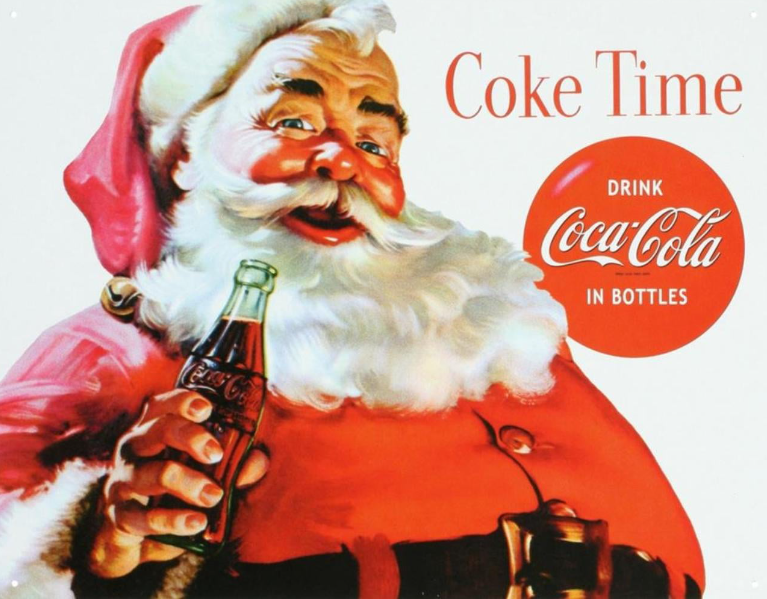Some Things You Just Might Not Know About Christmas!
Leaders are inquisitive… lifelong learners who always relish knowing the “why.”
Fortunately, there’s no shortage of things to know and learn, including traditions and celebrations observed over the holidays.
Here are a few things you just might not know about Christmas…
Jolly St. Nick
St. Nicholas preceded Santa Claus by a good number of years. In fact, St. Nicholas (a Christian bishop) was known for his generosity while the latter his jolly demeanor (and devouring platefuls of cookies placed near the fireplace each Christmas Eve).
Reginald?
Montgomery Ward had a tradition of buying and giving away coloring books for Christmas. In 1939, it created its own book to save money. A Montgomery Ward’s copywriter originated the story of a red-nosed reindeer with the names “Rollo” and “Reginald” first considered. Ultimately, Rudolph the Red-Nosed Reindeer was selected.
A Christmas classic
In 1964, the Christmas classic movie by the same name featuring Rudolph, Clarice, Abominable Snow Monster of the North and Island of Misfit Toys made its debut. GE invested nearly $4.5 million in the creation. Rudolph the Red-Nosed Reindeer ranks annually among the top-five most watched Christmas cartoons (“A Charlie Brown Christmas” produced in 1965 and “How the Grinch Stole Christmas” produced in 1966 rank first and second respectively, although your opinion may differ!).
Dutch treat
The Dutch gave us the idea of leaving cookies and milk near the fireplace for Santa. The snack was born on the feast of St. Nicholas (Dec. 6) when Dutch children left him food and drink in exchange for gifts left overnight.
One-quarter real
One of every four U.S. households will purchase a real Christmas tree this year. There are more than 100 Christmas tree farms in Iowa. According to the Iowa Christmas Tree Association, it takes 15 years to grow a tree of average retail sale height (6 feet). The top-selling Christmas trees in Iowa are Scotch Pine and White Pine.
Symbol of Christ
The Christmas wreath is the symbol of Christ. The holly represents the crown of thorns worn by Jesus at his crucifixion while the red berries signify the blood he shed on the cross. The wreath is indeed the reason for the season!
Coke and a Santa
Coca-Cola has always had a love affair with Santa. Illustrator Haddon Sundblom was hired in 1931 to depict the jolly fella in magazine ads.
Thanksgiving song?
James Lord Pierpont wrote “One Horse Open Sleigh” for his church’s Thanksgiving concert in the mid-19th Century. In 1857, it was re-released under the title “Jingle Bells” and remains one of the most popular songs enjoyed throughout the Christmas season.
Spring birthday?
Why is Christmas celebrated on Dec. 25? Good question. The actual birth date of Jesus Christ is unknown. In fact, many historians of the Bible believe Jesus was born in the spring.
Christmas emergency
Celebrating Christmas can be dangerous (just ask Clarke Griswold!). Truer to life, an estimated 15,000 people must make a visit to the hospital emergency room each year for holiday-related decorating accidents.
Recession proof
Total Christmas retail sales worldwide are projected to reach a new high this year of $942 billion U.S. dollars.
What’s for dinner?
While Roast Beast was a favorite in Whoville, you may find something different on the tableyou’re your enjoyment this Christmas. Google searches for “ham” and “turkey” spike during November and December. Spiral-cut ham edges out the bird as the most popular choice for Christmas dinner. For an assortment of mouth-watering recipes for the holidays that feature all the proteins, check out these courtesy of the Iowa Food & Family Project!
The king of trees
The Griswold home isn’t the only item adorned with 25,000 lights! So, too, is the Rockefeller Center Christmas tree. In 1931, construction workers placed a small, undecorated tree while working near the site. Two years later, another tree appeared, this time draped in lights. Today’s majestic tree bears more than 25,000 twinkling lights.
Map in hand
During World War II, the United States Playing Card Co. joined forces with American and British intelligence agencies to create a very special deck of cards. They were distributed as Christmas gifts but also helped Allied prisoners of war escape from German POW camps. When wet, individual cards peeled apart to reveal maps of escape routes.
Sweet bribery
Candy canes date back to 1670 in Germany when a choirmaster at a cathedral gave out sugar sticks to coax young children to keep quiet during the service! The hook was added at the end of the stick to represent the staff of the shepherds who visited Jesus when he was born. Two-hundred years later, red stripes were added. And eat up! The typical candy cane has just 50 calories, with the peppermint flavor having added health benefits like helping with stomach discomfort. Nearly 1.8 billion candy canes are made annually.
No matter the origins of your family traditions and observances, may you experience the love, joy, peace and hope of Christmas.
“For to us, a child is born, to us a son is given; and the government should be upon his shoulder, and his name shall be called Wonderful Counselor, Mighty God, Everlasting Father, Prince of Peace.” – Isaiah 9:6









